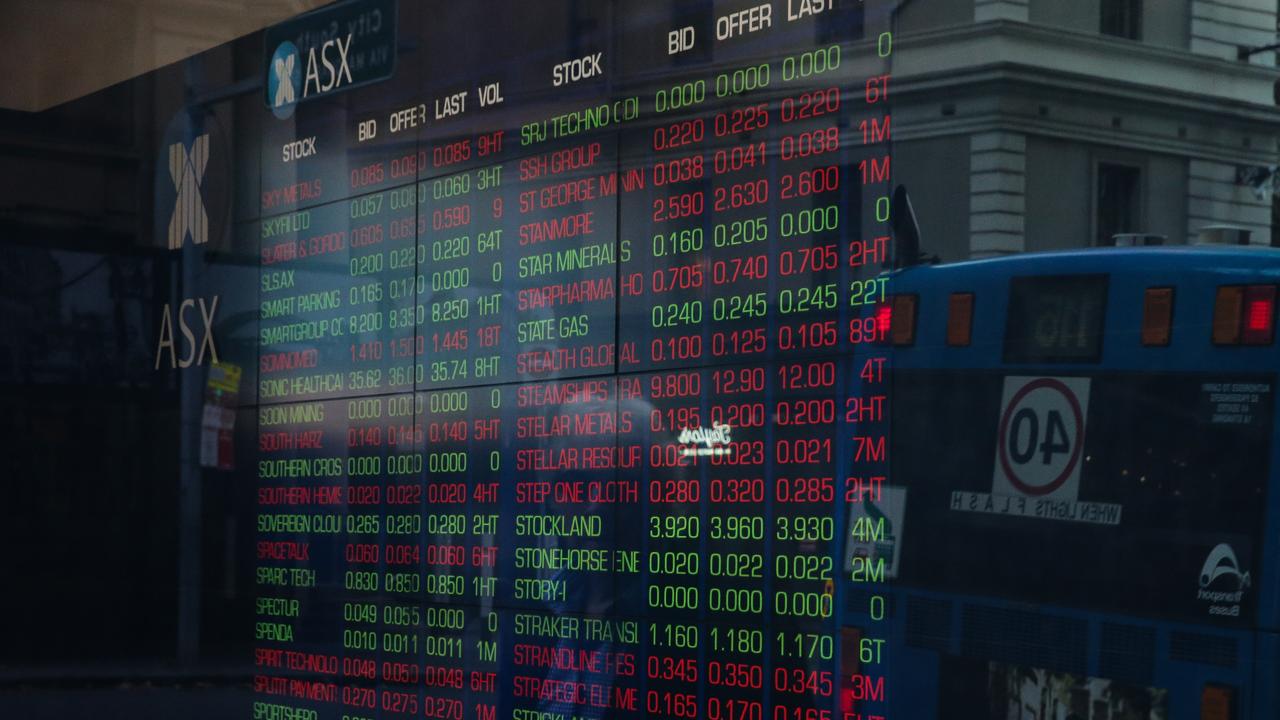Supply chain crisis tipped to stretch into 2022
If you thought the shipping crisis was over, think again. As we head into 2022, Aussies should brace for longer delays, fewer products and rising prices.

If you thought the shipping crisis was over, think again.
As we head into 2022, Aussies should brace for longer delays, fewer products and rising prices affecting everything from groceries and clothing to appliances, electronics and cars, experts say.
“The bottom line is prices are going to continue to rise to levels never seen before,” said Jackson Meyer, chief executive of freight forwarding company Versus Global.
All of this will come amid rising consumer demand as Covid-19 lockdowns and restrictions ease.
During 2021, the complex and delicately tuned global supply chains that transport goods from factories and farms to store shelves around the world were thrown into unprecedented chaos, amid a perfect storm of factors including Covid-19 lockdowns, surging consumer demand, extreme weather events and labour shortages.
In recent weeks a new crisis has emerged on Australian shores – a critical shortage of diesel exhaust fluid AdBlue, which the trucking industry fears could cripple the transport networks that bring goods to consumers.
The key ingredient in AdBlue, urea, which is seeing global supply disruptions due to a Chinese export ban, is also used in fertiliser.
Aussie farmers have already described skyrocketing fertiliser costs as a “kick in the guts”.

Mr Meyer said the urea shortage was a huge concern for Australian farmers, and may result in fruit and vegetables not making it on supermarket shelves.
With no tractors to produce food, and no trucks to deliver it, combined with soaring fertiliser prices, farmers globally are being impacted.
At the same time, global shipping disruptions show no signs of abating.
The cost of importing goods to Australia has soared 450 per cent on this time last year, delays are extending, and capacity is being reduced as carriers increasingly divert vessels to the more lucrative trans-Pacific route servicing the United States.
“To give you an insight, we have just got notification today that effectively shipping lines have suspended bookings – no new bookings are even going to be considered until mid-January,” Mr Meyer said in a December 15 interview.
“This is ridiculous. All importers are affected – food products, furniture, electronics, it’s everything.”
Mr Meyer said Australian-based food and beverage manufacturers would be particularly affected, as they often relied on ingredients, additives and seasonings sourced offshore.
Other raw materials such as resins used to manufacture plastic bottles were facing delays and shortages, as were finished products such as food packaging.
“It’s come to a point here where it actually costs more to import the container than the value inside the container,” he said.
“We’re seeing bickering between importers and their own customers trying to get price increases through in order to maintain their business. Ultimately it’s going to hit the consumer.”
Mr Meyer said import delays were already averaging two weeks, with that expected to blow out to 21 days from February.
“It’s an incredible amount of time,” he said. “Particularly local businesses that sell to other local businesses on a timeline, when they can’t meet their timeline they’re getting penalised, orders cancelled.”
According to the S&P Global Platts Container Index, average prices of standard 40-foot containers on key global routes have skyrocketed from around $US1000 to more than $US7000 since last year.
Tony Srnec, operations director at Sydney-based firm Summit Global Logistics, said customers were changing their business models as shipping costs meant it was “not worth importing” anymore.
“My opinion is that it’s going to continue and I think we’re just going to learn to live with it somewhat and adapt to it,” he said.

Meanwhile the ongoing disruptions caused by isolation and quarantine requirements look set to continue, as surging cases of the Omicron variant spark fears of yet another wave of the coronavirus pandemic.
Mr Meyer said key calendar events including Chinese New Year on February 1, and the Beijing Winter Olympics starting on February 4, threaten to add further pressure to already struggling supply chains.
Port closures are expected in northern China – one of Australia’s most frequented shipping routes – while ports in southern China are extending service suspensions by at least six weeks over the Lunar New Year holiday due to strict quarantine measures for shipping crew, he said.
“We have an office in Shanghai – the buildings next to us effectively got shut down for 14 days,” Mr Meyer said. “There’s no visibility when and where stuff is going to be shut down.”
Mr Srnec said traditionally shipping costs tended to drop “quite considerably” after Chinese New Year, so “it’ll be interesting to see what happens” this year.
Last month, Australia’s competition watchdog pointed the finger at the powerful Maritime Union (MUA) for disruptive workplace actions it said were contributing to supply chain bottlenecks.
Even before the recent disruptions, the country’s container ports were “relatively inefficient” and “well below” international best practices, according to the Australian Competition and Consumer Commission’s report.
“We were told that some shipping lines were already withdrawing services from Australia before Covid hit,” ACCC boss Rod Sims said. “Australia needs to take decisive action to remain an attractive destination for global shipping lines.”
The watchdog said industrial actions and “restrictive work practices” pushed by the Union – such as demands for “family and friends” hiring quotas – caused further supply chain disruptions and exacerbate delays.
“For example, a shipping line informed the ACCC that the delays at Port Botany in September 2020 cost it around $25,000 a day per ship,” the report said.
The MUA, however, blamed “astronomical international shipping costs” for Australia’s supply chain crunch, saying “entrenched shipping company cartel behaviours” were affecting consumers’ access to imported goods.
Mr Meyer said there was some truth to that, with major shipping lines recently reducing the proportion of their contracts into Australia priced at more favourable fixed rates, typically negotiated for large bulk business on an annual basis.
Whereas previously around 65 per cent of contracts were at more favourable fixed rates, shipping lines had effectively flipped the allocation to market rates “to maximise profits”.
“Which ultimately means there’s going to be less product coming in,” he said.






